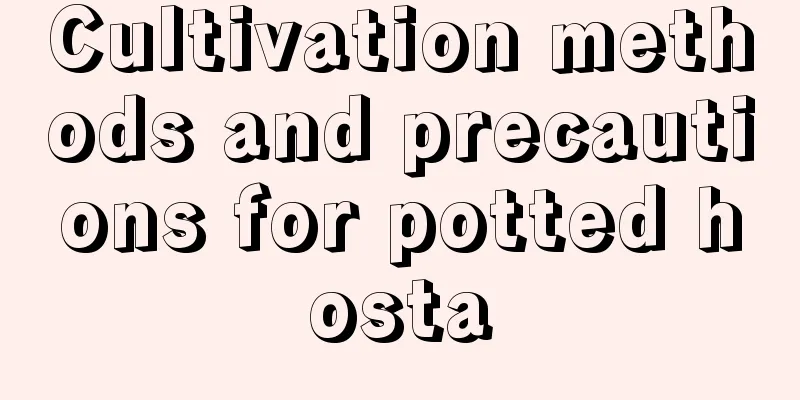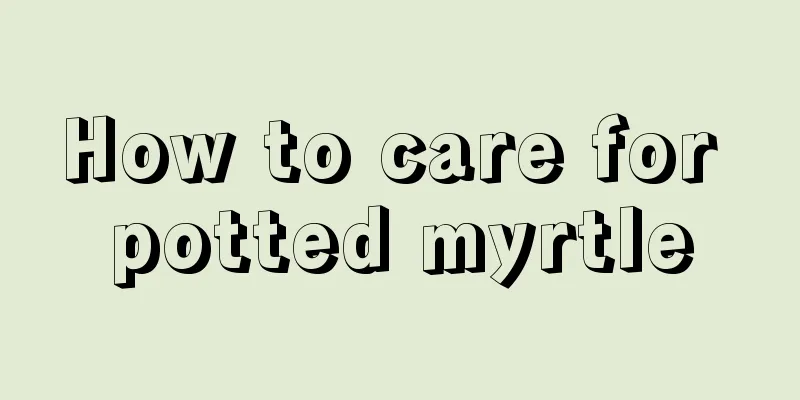Cultivation methods and precautions for potted hosta

1. Maintenance methods1. Soil: Fertile and water-conserving soil is suitable for growing hosta, and sandy loam is the most appropriate choice. Sandy loam is very suitable for the growth needs of hosta, allowing it to grow better. 2. Water: Hosta likes a humid environment, and frequent watering can make it grow better. But don't let water accumulate in the pot. Just keep the soil slightly moist at ordinary times. 3. Nutrients: There is not much demand for fertilizer during the seedling stage, and it is sufficient to apply fertilizer once every half a month or so. When entering the flowering period, the demand for fertilizer gradually increases. It is sufficient to apply fertilizer once every seven days or so, and you can choose organic fertilizer. 4. Light: It likes to grow in a slightly shaded environment. It is best to give it appropriate diffuse light. It is not suitable for direct sunlight, which will cause damage to the leaves. 2. Breeding techniques1. Pruning: After cultivating it for a period of time, you should loosen the soil and trim its withered branches and leaves to allow it to be ventilated and light-permeable so that it can grow better. 2. Reproduction: Generally, the method of division is adopted, and the time is between March and April. First, dig out the old plant and dry it in the sun, then apply some charcoal powder on the cut and plant it. Now you can wait for it to sprout new leaves. 3. Problem diagnosis and treatment1. Spot disease: Spot disease is very harmful to the leaves. In severe cases, it will cause the entire leaf to wither and turn yellow. The prevention and control method is to spray diluted benomyl once a week, and the problem will be solved after about three times. 2. White rot: A common disease of potted hosta is white rot, which will directly damage its roots and cause rot. It can be treated by spraying diluted dichlorodiphenyltrichloroethane. IV. Other issues1. How to survive the winter: It is a very cold-resistant plant and will hibernate in winter. At this time, you just need to keep the temperature no lower than five degrees Celsius. 2. Whether it can be exposed to rain: Potted hosta cannot be exposed to rain. On rainy days, they should be placed in a ventilated place indoors to avoid rain. Rainwater stored in the pot will cause its roots to rot, affecting its normal growth. |
<<: Cultivation methods and precautions of Ligustrum lucidum
>>: Breeding methods and precautions of Thousand Rabbit Ears
Recommend
Can ginkgo leaves be used as flower soil? Ginkgo leaf humus soil can grow flowers
Can ginkgo leaves be used as flower soil? Ginkgo ...
Flowers suitable for autumn
1. Hibiscus Hibiscus flowers have bright colors, ...
How to plant aloe vera with a broken head? Can aloe vera still be planted if its head is broken?
Aloe vera is a common flower in life and has a wi...
When is the best time to prune nectarine trees? Pruning methods and key points
Nectarine tree pruning time Nectarine trees can b...
How to water Cymbidium orchids
Water quality requirements The water used for Cym...
What to do if lucky bamboo turns yellow in winter
1. Change water sparingly Reason: After entering ...
How to grow hydroponic purple spider plant more vigorously
Purple spider plant is a plant with strong adapta...
How long does it take for lisianthus to bloom after planting seeds?
How long does it take for lisianthus to bloom? Ho...
The difference between Bauhinia and Crape Myrtle
1. Leaf Difference The leaves of Bauhinia are lea...
The efficacy and function of Suaeda salsa
1. Eliminate stagnation Suaeda alkali tastes slig...
How often should orchids be watered?
1. How often should orchids be watered? Orchids s...
Cultivation method of potted orchid
1. Maintenance methods 1. Temperature: Between 15...
Do newly transplanted succulents need to be fertilized (can succulents grown in nutrient soil still be fertilized)
Regarding whether fertilization is needed when tr...
How to grow osmanthus? If you raise it this way, people in the surrounding area can smell it!
Daily maintenance of osmanthus 1. What kind of so...
Can the red spider lily be propagated by cuttings? How does the red spider lily propagate?
1. Can it be propagated by cuttings? Red spider l...









